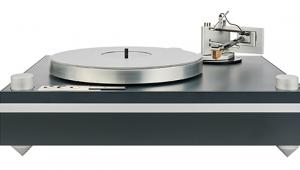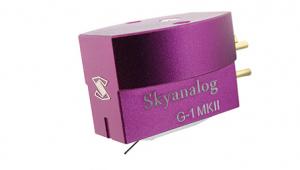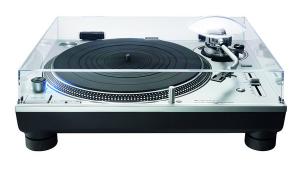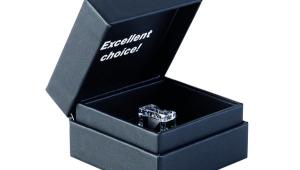Ortofon Mc Windfeld (£1799)
If you’re going to invest in a new moving-coil cartridge, who better to turn to than the first company to produce the MC cartridge – Ortofon. As discussed in last month’s ‘On Location’ report [Dec ’07, p112], Ortofon of Denmark has been building fixed-magnet cartridges since day one of the LP record, and it has continued to innovate, priding itself on high production runs with consistently high quality.
From the late 1970s, one name at Ortofon became associated with refinements to the art which were realised in legendary cartridges such as the MC20, the MC3000 and MC5000, the Rohmann and Jubilee – Mr Per Windfeld. Now retired, it befell new Chief officer of Acoustics and Technology, Leif Johannsen, to honour the company’s long-term designer with a high-end design that would bear the PW name. The result is the MC Windfeld, the distillation of the brand’s achievements.
From the outside, the MC Windfeld doesn’t look especially different from the Jubilee or the later Kontrapunkt models, other than a change of colour to satin black and the gold PW monogram on each flank. So inside we must peer to see what changes have been wrought by the company’s new design team.
The main body, constructed from a ‘special alloy’ – which designer Johanssen ruefully would not disclose – has been reworked so that the threaded 2.5mm headshell mounting lugs are now integral to the central supporting block, and not in the stainless steel side shells, creating a more direct connection from generator to tonearm. The body’s material is said to be very hard with high internal damping, and is used for making injection molding tools.
Ortofon specifies a nominal output of 300µV and tracking force of 2.3–2.8g. The cantilever is boron, with a double-polished Replicant 100 long-contact diamond profile. Compliance is given as 16µm/mN and overall weight is a relatively heavy 13g.
ON THE LEVEL
To look at the usual tonal divisions of bass, middle and treble, the MC Windfeld can be characterised as extremely even-handed, with an uncannily level response that favours practically no sector over another. Contrast this with the archetypal lower-cost moving-coil that gets over-excited in the upper reaches, or the music-focused MM that tends to draw one into the midband at the expense of HF detail and bass accuracy.
Listen a little longer, though, and you realise that there is something very special happening in the bass. Not by unfolding swathes of low-frequency that will get organists playing air peddle with their feet, but through an understated description of what is playing, beneath the superimposed melodies and harmonies. From The Yes Album [1971, Atlantic K40106], ‘Yours Is No Disgrace’ was heard with Jon Anderson’s vocal suspended virtually in the air; yet below, Bill Bruford, the band’s consummate drummer, was heard working around the group’s individual lines with his legendary stick work – and with newly-revealed technical patterns dropped into place from his bass drum part.
INTO NOTHINGNESS
A common critique of a new cartridge is to recount how surface noise dissappears into nothingness. Now while the mathematically-defined profile of Ortofon’s Replicant allows it to sail through a clean pressing without a tick, it’s no miracle worker for more tired examples of vinyl, as I discovered with a well-loved print of Sibelius’ violin concerto, starring Kyung-Wha Chung [Previn/LSO, Decca SXL 6493]. This betrayed its age and wear with a background patter of minor scratches and crackles, yet placed the noise sufficiently detached to the music that it lost all irritation. When violin and viola sections whip up through the first and last movements, the Windfeld maintained perfect composure through the strings’ vigour. Without becoming sweet and silky to the point of impressionism, it kept the delicate sweeps of massed strings in check, in time, in tune.
That uncanny talent at tracking bass frequencies even seemed to benefit solo violin, giving more body and reality to the sound. The instrument was not drawn forward and spotlighted for easy attention, but sat slightly deeper in the mix, yet readily discernible. And when Chung hits the highest notes, there’s a pure whistle, almost a sinewave riding over the accompaniment that captures the shape of the instrument’s highest harmonics.
Some high-end cartridges are more lyrical here, blending more orchestral colour and a more intimate presentation that does engage the listener in a compelling fashion. The Windfeld is drier than these romantics, more spacious, considered and impartial. Yet the Windfeld is not clinical, for clinicality suggests an antiseptic bleaching of music’s life and colour. Perhaps its musical expression is not as developed as a Transfiguration Orpheus, for example, because it does less to sweeten and flatter the performance.
Want to hear a test of a cartridge’s tenacity? Try acapella voices working together in the tightest of keen harmonies, such as the klapa style from the former Yugoslavia. Croation band Lado sing with soul and joy, – seemingly simple voice lines that defeat most pickup cartridges and renders the music less than comfortable to access. Not so with the Windfeld, which sailed through the beats and overtones of closely-spaced voices, bringing a performance into the room.
That this cartridge can track like a limpet and provide strain-free, accurate rendering of the recorded groove is not in any doubt. Yet it also belies a view that the Ortofon sound is somehow too accurate, too neutral and hence lacks drama or life. For by its reading of the groove with such freedom of prejudice and especially by seeming to preserve the natural phase of sound, from top to bottom, it simply plays any record to the best of that recording’s ability. If I now had to choose one desert island cartridge, the Windfeld would be it.
VERDICT
A development of previous successes such as the Jubilee, the MC Windfeld builds on its predecessors with well-thought internal improvements. It’s a very accurate tracker of records, with stunning, honest bass, pure clean treble and superb soundstaging. A stand-out cartridge for getting the best out of vinyl, it’d be a first choice for transcription.
Originally published in the January 2008 issue

























































